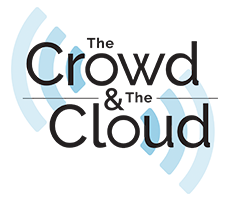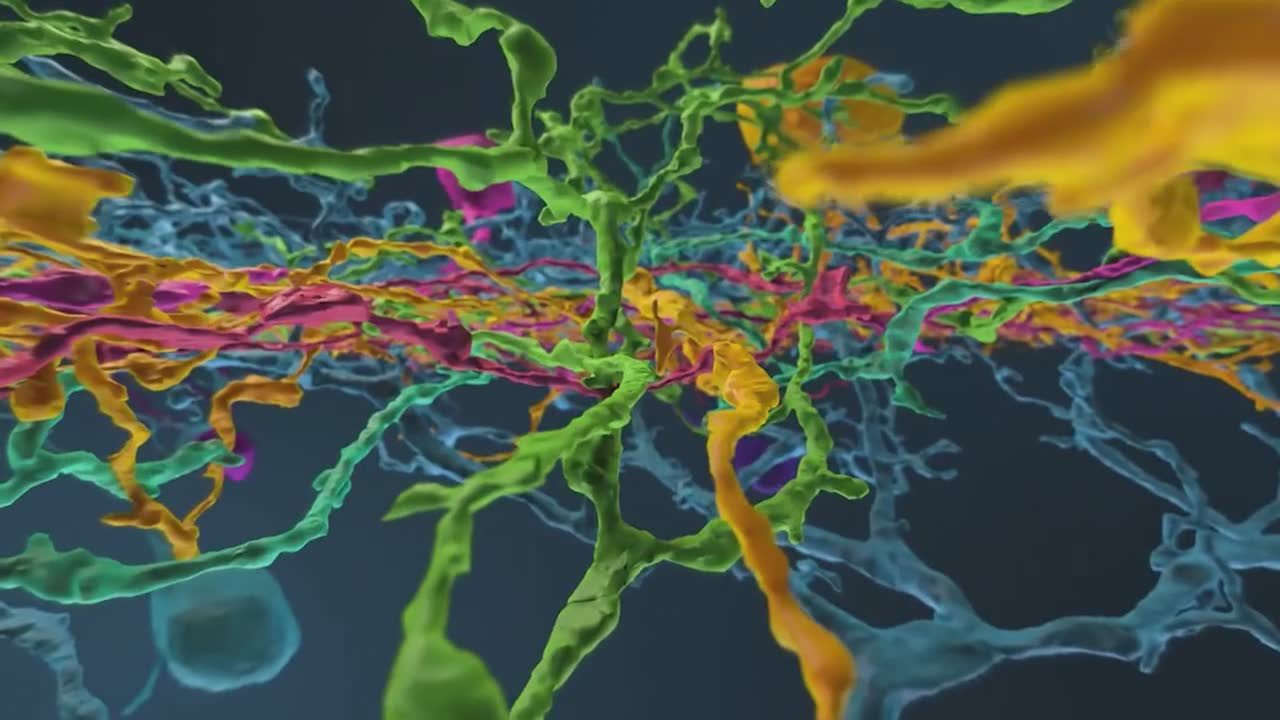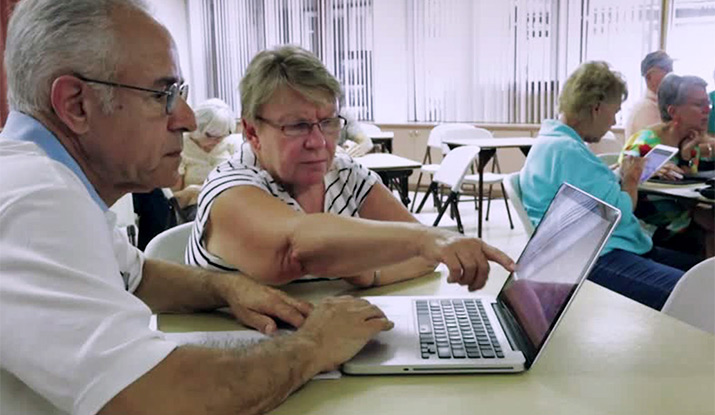
Newsletter
Sign up and stay in-the-know about The Crowd & The Cloud and the world of citizen science.


Tell us a little about yourself!
My name is Amy Robinson. I'm the Executive Director of EyeWire and Wired Differently, which is a crowdsourcing, nonprofit organization that spun out of MIT. We produce EyeWire, along with what will be EyesOnALZ (formerly WeCureALZ).
What is EyeWire?
EyeWire solves a big challenge in neuroscience, which is ‘how do we derive insights from data sets?’ Specifically, if we want to understand how the brain does what it does, we need to know what's in it. The brain's made of neurons that are connected through these electrochemical junctions called synapses. The way that the brain processes information is through these really complicated networks.

EyeWire, a 3D puzzle game, helps map the structure of neuron branches.
A big challenge in neuroscience is mapping out the structure of these cells. It takes us tens of hours to map one neuron, and there's 80 billion of them in one brain. We've turned the data analysis process into this 3D puzzle game, and now we have a quarter of a million puzzle gamers from all over the world, 150 different countries, who solve these 3D puzzles, mapping out the structure of neuron branches. This allows us to then model their function, identify new cell types, and put us in a better position to ask questions about how the brain does what it does.
EyeWire is a way to crowdsource data analysis. (**learn how to play EyeWire here:)
How has EyeWire worked to generate solid scientific information?
We'd been working on the same data sets since 2009 without making much progress, until we turned it into the EyeWire game. Now we're starting to identify never before known cell types. We've discovered mechanisms of what's called “direction selectivity.” Think of it as how you're able to recognize things in your field of view. Movies, for example, you can see things moving up or down, left, right, faster, slower. There's neurons in the back of your eye that allow your brain to preprocess information that then gets processed across other pathways within the brain.
What was it that crowdsourcing could do that you hadn’t been able to do as well in the past?
The challenge that EyeWire is trying to solve is that we need a higher throughput image analysis. It takes us so long to analyze data that really getting to the bigger questions, the higher level questions of how does the brain make you "you," takes too long. What happens when you're having ideas, or being curious or creative, or when you've worked really hard to understand something and finally it clicks. Those are the questions that I'm really interested in.
To me, crowdsourcing not only helps us analyze data faster, ask questions faster, but it brings in people from different perspectives, from different backgrounds. Approaching the challenges and the hurdles within the field from different angles leads to innovative ideas that would never be generated within one lab alone. When you think about it, trying to figure out how the brain works is bigger than any lab, any institution. It's fitting that we can open up this discovery process to the entire world thanks to the Internet and the advent of gaming.
What is it that keeps the players coming back to EyeWire? What motivates them to jump into it in the first place, and then spend hours, and hours, and hours trying to crack the puzzle?
It's a couple of things, the first of which is community. We have real-time chat in the game and the players are not just usernames. They get to know each other. They talk with each other. They share cool science and tech articles, or they talk about recipes. We have high school students talking with grandmothers about neuroscience and about the brain. Players get to know that they're not alone. They get to connect with other people, talk with players from other countries who they might not have ever interacted with.
The second thing is that there's a real purpose behind this. Every cube that you submit in EyeWire you know we're getting closer to understanding things that have never been known before. That is a very powerful driving factor.
What do you see the potential of Citizen Science with crowdsourcing is, in terms of tackling really big science questions?
The potential of crowdsourcing in citizen science is limitless in my opinion. As creative as you can possibly be with sensors and iPhone cameras, and all sorts of data collection, data analysis... solving puzzles, to formulating new approaches to science, to creating entirely new hypotheses and eventually being able to test them... really the only limit is our imagination. And I think there's something very powerful and very invigorating about building crowdsourcing systems that bring people together to take action on something that they care about. I think that's one of the biggest things to me about crowdsourcing. We've really only scratched the surface.
Alzheimer's is a disease that many people either fear they're going to get or have relatives who've got it. Is there some aspect of Alzheimer's that inspires you to contribute your expertise, and the model you’ve spent time and effort creating, to really try and advance Alzheimer’s research?
Alzheimer's is terrible. It's horrendous. It impacts almost everyone you know, not directly in that they have it, but that almost everyone knows someone or will know someone who is negatively impacted by a neurodegenerative disease like Alzheimer's. To me, if we can further research, and if we can engage the world to make these discoveries, that's something that you can't even quantify the value of.

Senior citizens play EyesOnALZ's Stall Catchers game.
What my hope is with EyesOnALZ is that it becomes more than a game. It becomes more than data analysis, and it evolves into improved public knowledge and public participation in the research discovery process. Hopefully, maybe if it's people who are participating in honor of a loved one, it provides them with better tools and resources so that they can better cope with, manage, and help their loved ones through these hard times.
Can the older generation get involved in this, or do you think it's something that's going to be too complicated to get involved in?
The older generation will definitely be able to get involved with EyesOnALZ. It won't be too complicated. We will produce tutorial materials that clearly and concisely explain how you do the project, and how you can play and participate. The game mechanics make it more fun because at the end of the day you are looking at scientific data. When you can get points, and get feedback, and move up a level, it makes it more rewarding for people to participate.
Why should a medical researcher trust the data that comes out of crowdsourced science?
Checks and balances. If you want to maximize the accuracy of a crowdsourcing citizens’ science program, all you need to do is put accuracy checks in place such that players can advance through the system. With that advancement, that's tied to their performance that's checked by headquarters. You give them more powers within the game.
What are the big challenges ahead in the next year?
We have many stakeholders here, so it can be challenging to make sure that everyone's expectations are aligned as far as what we're building, how we're sharing it, and how it's going to be maintained in perpetuity. We also have some pretty difficult technical challenges, nothing that we cannot achieve in my opinion, but they're certainly not easy.
In the past, EyeWire has been this prototype project and to me it's this proof of concept that yes, you can turn neuroscience data analysis into a game that lots of people all over the world will play and find fun. Now that we know that, we can take what we've learned and apply it to this EyesOnALZ project. This second time around, it's going to be faster, it's going to be more effective, it's going to be more fun, it's going to be more efficient, so I'm really excited to see this move forward.
A few years from now, down the pipe, what would success, in your mind, for EyesOnALZ look like?
Success is more than getting people to participate. It's making it into a movement. It's making it so that EyesOnALZ is as recognizable as Coca Cola or Angry Birds. If you're on a train going to work, or you're waiting in line at the grocery store, you're likely to look over and see someone on their phone playing EyesOnALZ.
To become a household name in that people know, and participate, and respect, and engage in this idea of democratizing science and getting science out of the lab and into the hands of the masses. To me, that's what success will be.
